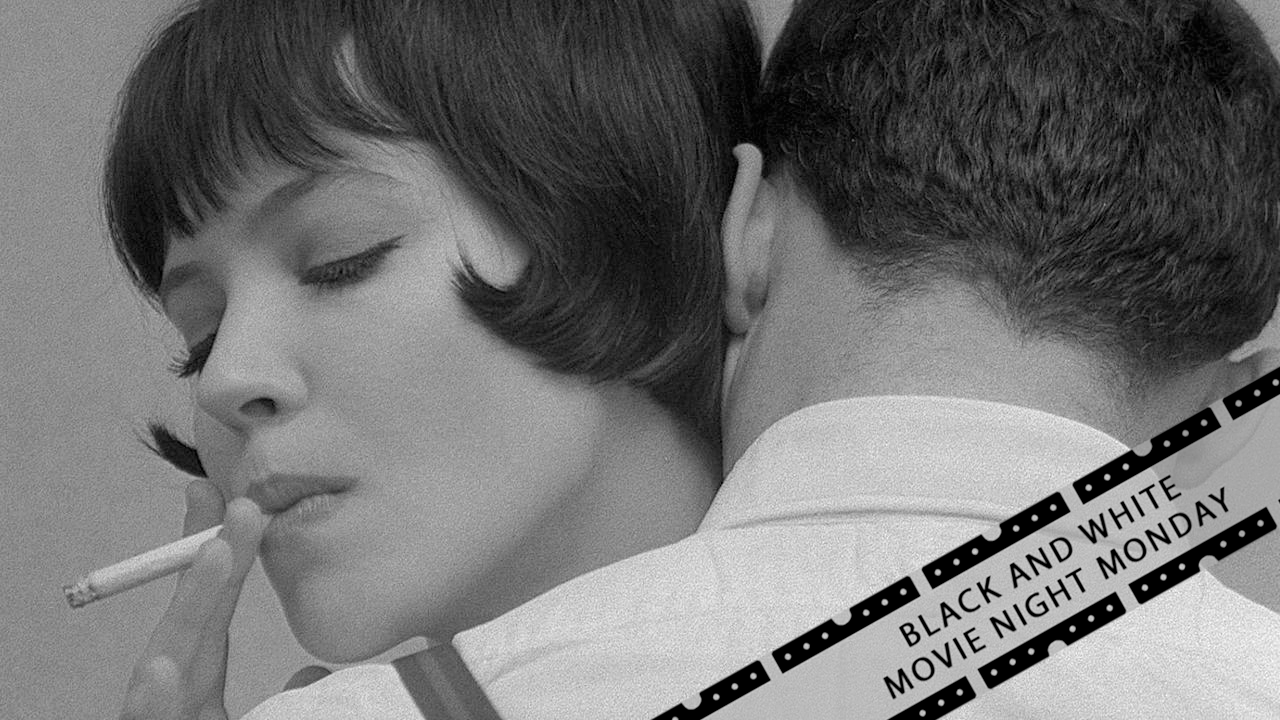
Vivre Sa Vie is all about identity, and it is almost entirely expressed through the face of Anna Karina, who plays the character of Nana. The film opens with a quote: “Lend yourself to others, but give yourself to yourself.” After this quote, we get an extremely compelling series of shots consisting of nothing but Nana’s face. From these shots, (accompanied by the beautifully haunting score from Michael Legrand), we get the sense that she is wrestling with identity, purpose, and concealment. The credits appear over her face and the back of her head as we get the sense that this woman is afraid of who she is, or unsure of it. Am I reading too much into this? Maybe…but that’s what film is for, plus Anna Karina’s eyes seem to communicate so much through such a simple stare. And it’s clear how Godard frames Karina on-screen that he thinks the same thing. For every scene, it is her face alone that tells the story, and it tells quite a lot. If you want to add another layer into this analysis it’s worth noting that Karina was married to Godard when they made this film…but I digress.
Anyway, what was the story about? Oh right, it was about…her. It’s difficult to say what else. After all, the film title translates, “My life to live.” We see various different chapters into her life and each time see a new sense of who she is. In the first scene, we find she is leaving a man named Paul and their son presumably to pursue a career in acting, but she needs money. After this, we see her in her daily life at work, still asking for money and desperate for a break. More importantly we see that she doesn’t truly have anyone to walk through life with. Her life is devoid of passion, and she is tired of not being seen or being understood. In a conversation early on she expresses, “I exist too…” Another particularly beautiful scene involves her going to the cinema and watching the classic 1928 silent film, “The Passion of Joan of Arc,” another film known for it’s powerful use of female-led close ups. A powerful scene plays in which Joan of Arc is questioned about her identity and purpose as she is sentenced to death. The scene resonants with Nana and the filmmaking of Godard, as the shots are visually dominated by nothing but the human face, and it is a thing to behold. A nearly identical reverse shot moments later shows us Nana in a close up as well, shedding a tear just as Joan of Arc did. The difference is that Nana is surrounded by darkness, Joan of Arc by light.
The film progresses and Nana is forced into prostitution, though her character seems to find happiness and purpose in it, we see that her fears and struggles are the same. It’s sad to watch, but Godard never gives us a moment to feel the weight of her actions or really pause for an emotional beat. Instead, his camera is a dispassionate one, often viewing things objectively as they are, just watching very matter of factly. It’s her life to live not ours. What more can we do but watch?
